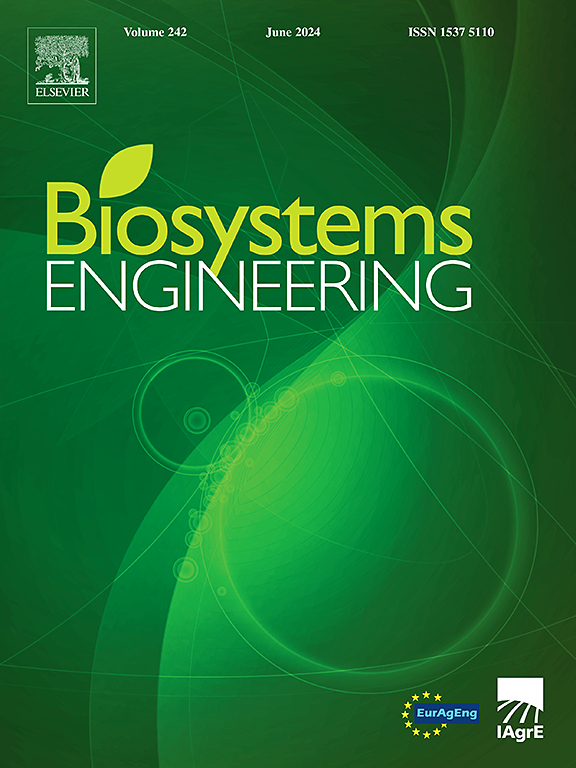基于有限元模拟的温度调节措施对蜂群热力学特性的影响
IF 4.4
1区 农林科学
Q1 AGRICULTURAL ENGINEERING
引用次数: 0
摘要
近年来,极端天气事件和温度波动日益频繁,对蜂群的生存构成了重大威胁。人工控制蜂箱温度可以有效地保护蜂群和保存蜂蜜,但目前缺乏对调节措施对蜂群温度和热损失影响的定量研究。本研究采用有限元模拟方法模拟不同环境温度和调控措施下蜂箱的热力学变化。研究结果表明,在环境温度为34°C时,蜂窝中的最小热损失发生。环境温度的变化显著影响蜂箱内部温度和热损失。蜂群规模的增加有助于控制蜂巢内部温度,提高能量效率。然而,在蜂箱顶部打开通风口会导致热量损失增加几倍,应该谨慎使用。为了达到最佳的保温效果,建议使用热阻值大于25k W−1的保温材料。本研究阐明了环境温度和调控措施对蜂群热力学的影响,有助于提高极端天气条件下蜂群的生存能力。本文章由计算机程序翻译,如有差异,请以英文原文为准。
The impact of temperature regulation measures on the thermodynamic characteristics of bee colonies based on finite element simulation
In recent years, the increasing frequency of extreme weather events and temperature fluctuations have posed significant threats of the survival of bee colonies. While artificial control of hive temperature can effectively protect bee colonies and conserve honey, there is a current lack of quantitative research on the effects of regulatory measures on colony temperature and heat loss. This study employs finite element simulation to model the thermodynamic changes in hives under various ambient temperatures and regulatory measures. The findings indicate that the minimum heat loss in beehives occurs at an ambient temperature of 34 °C. Variations in ambient temperature significantly affect the internal temperature and heat loss within the hive. An increase in colony size contributes to internal hive temperature control and enhances energy efficiency. However, the opening of ventilation ports at the top of the hive can lead to a several-fold increase in heat loss and should be used judiciously. It is recommended to use insulation materials with a thermal resistance value exceeding 25 K W−1 for optimal insulation effects. This study elucidates the impacts of ambient temperature and regulatory measures on the thermodynamics of bee colonies, thereby aiding in enhancing the survival capability of bee colonies under extreme weather conditions.
求助全文
通过发布文献求助,成功后即可免费获取论文全文。
去求助
来源期刊

Biosystems Engineering
农林科学-农业工程
CiteScore
10.60
自引率
7.80%
发文量
239
审稿时长
53 days
期刊介绍:
Biosystems Engineering publishes research in engineering and the physical sciences that represent advances in understanding or modelling of the performance of biological systems for sustainable developments in land use and the environment, agriculture and amenity, bioproduction processes and the food chain. The subject matter of the journal reflects the wide range and interdisciplinary nature of research in engineering for biological systems.
 求助内容:
求助内容: 应助结果提醒方式:
应助结果提醒方式:


